Artists working for the U.S. Mint have been busy. 2014 Native American $1 Coins become available next Thursday, March 20, and already designs candidates have been unveiled for next year’s coin and for the one in 2016, the topic of this coin news article.
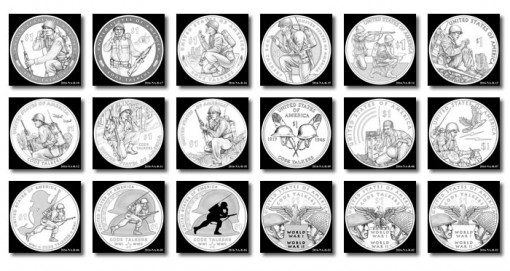
Eighteen proposed designs are competing for the reverse or tails side of the 2016 Native American $1 Coin. Each of them is emblematic of the contributions made by Native American code talkers who served the United States Armed Forces during World War I and World War II. Code talkers describe Native Americans who used their tribal languages as a means of secret communication during wartime.
Reverse Design Candidates for 2016 Native American $1 Coins
Immediately below are line art images of the 18 candidate coin designs. Images may be enlarged by clicking on them.
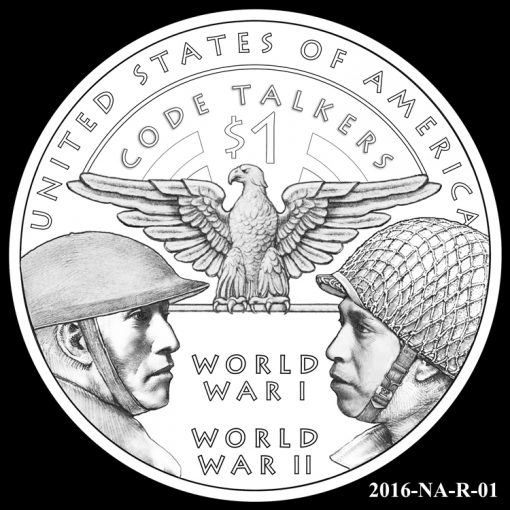
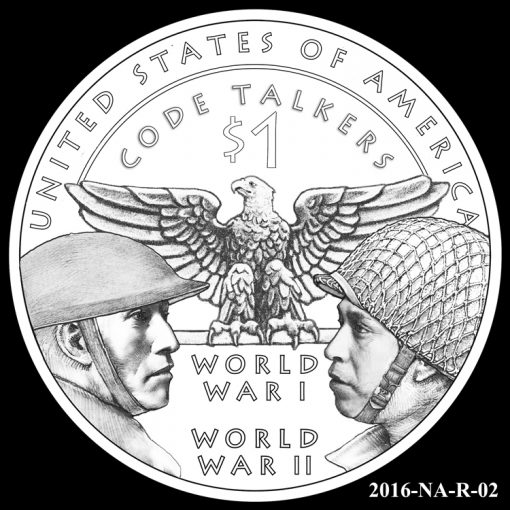
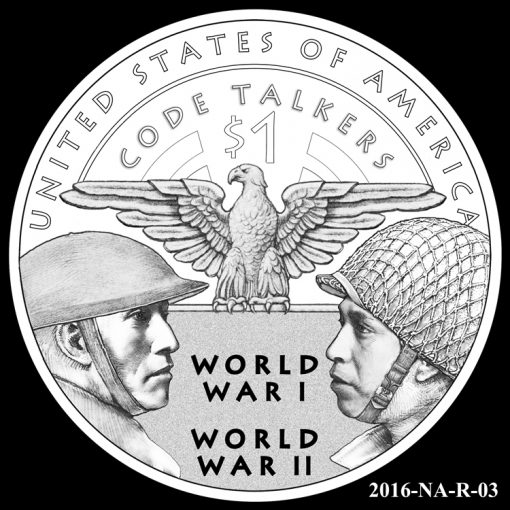
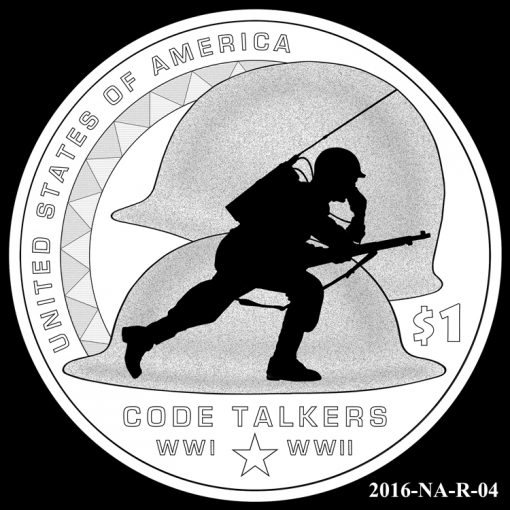
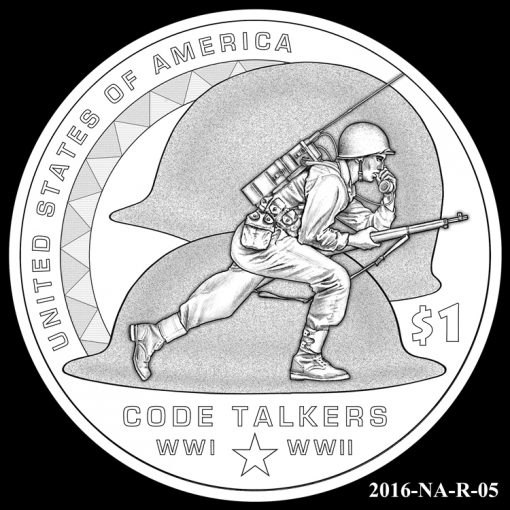
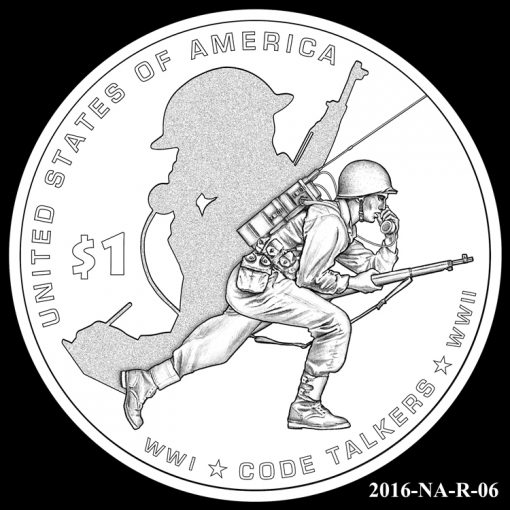
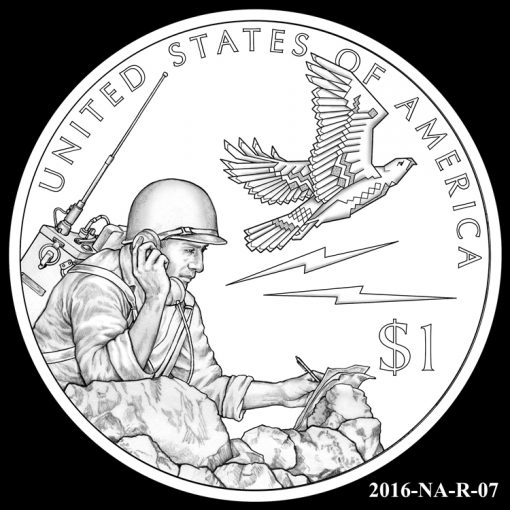
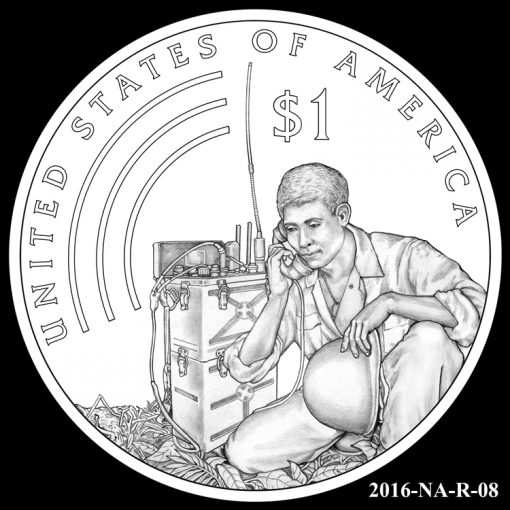
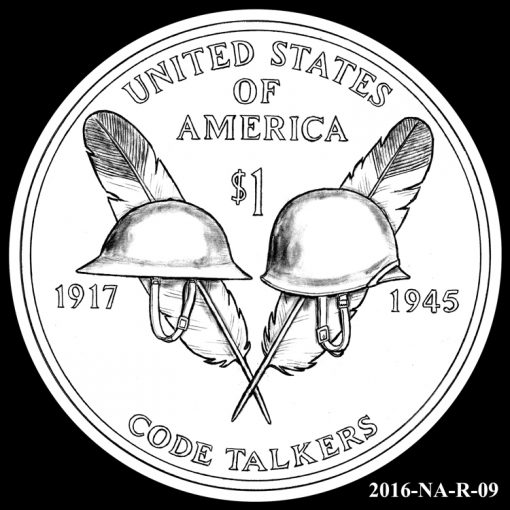
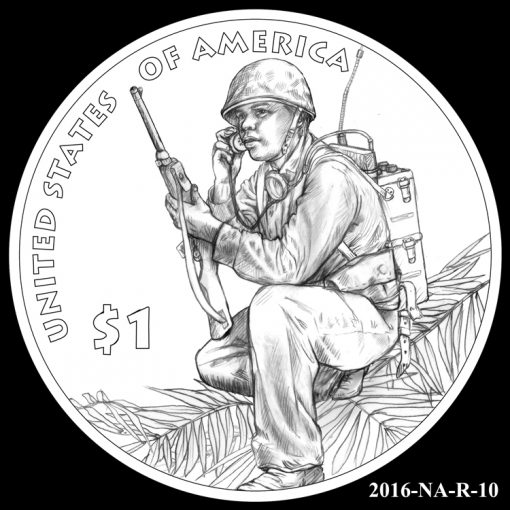
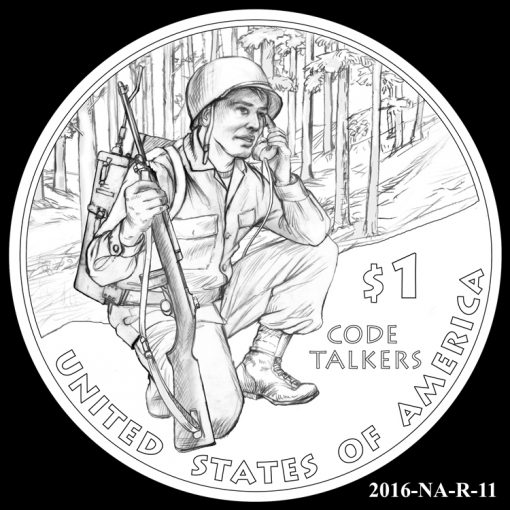
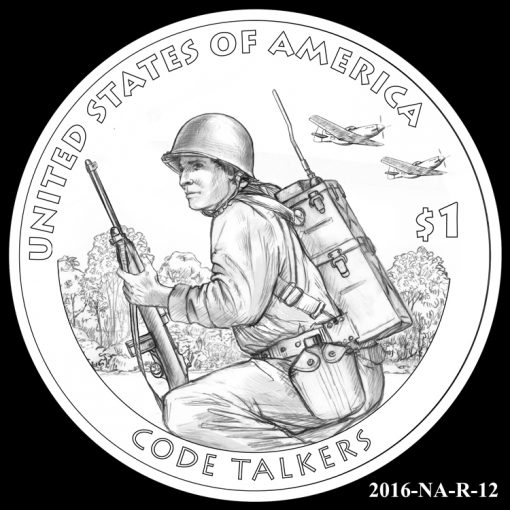
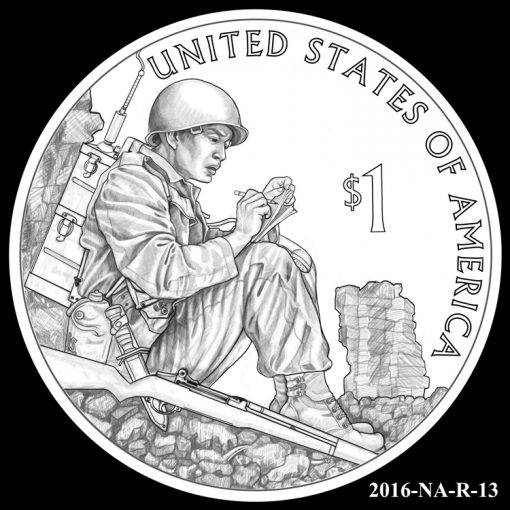
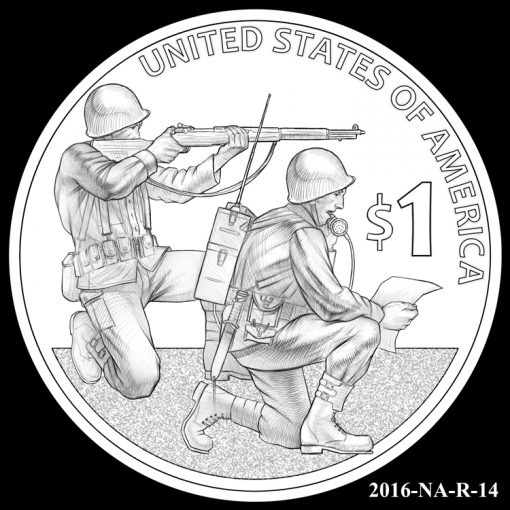
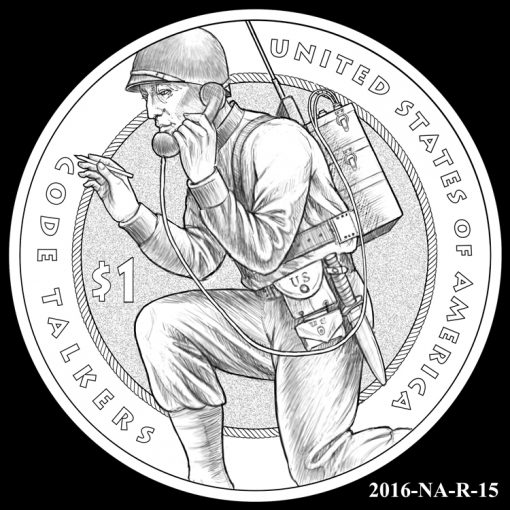
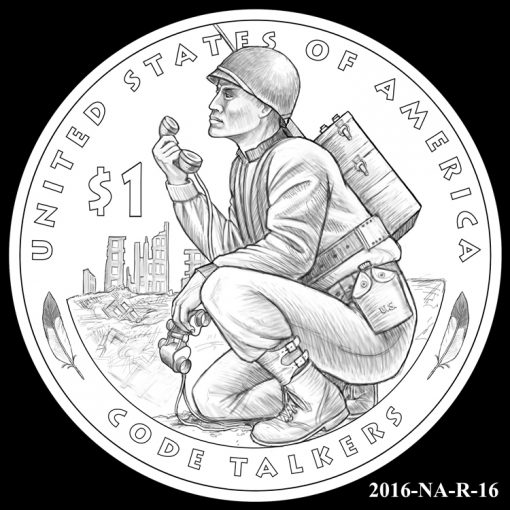
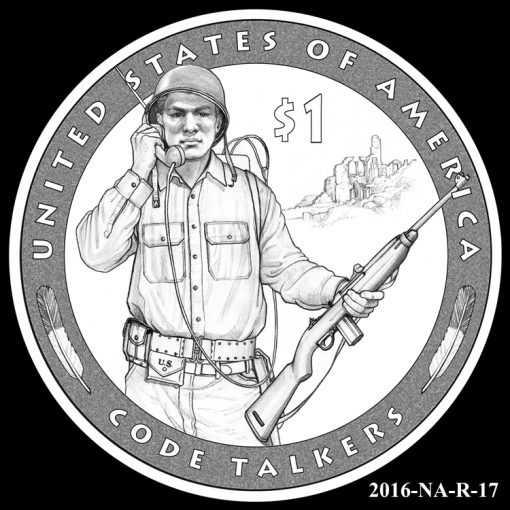
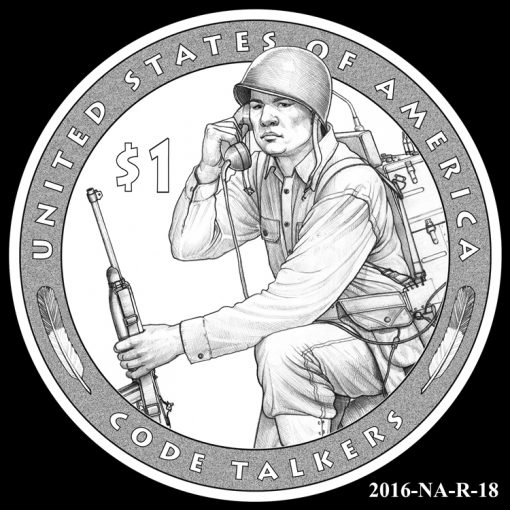
Selection Process
All 2016 Native American $1 Coin design candidates will get appraised by the Citizens Coinage Advisory Committee and the Commission of Fine Arts, the two bodies tasked with reviewing U.S. coin and medal designs.
One design will eventually get selected by the U.S. Treasury Secretary after receiving recommendations from the U.S. Mint and after consulting with the Committee on Indian Affairs of the Senate, the Congressional Native American Caucus of the House of Representatives, and the National Congress of American Indians.
Obverse $1 Design and Coin Edges
Obverses are common to Native American $1 Coins. They feature Glenda Goodacre’s image of Sacagawea, the Shoshone woman who was an interpreter and guide for the Lewis and Clark Expedition, and her baby. Inscriptions above the two read: LIBERTY and IN GOD WE TRUST.
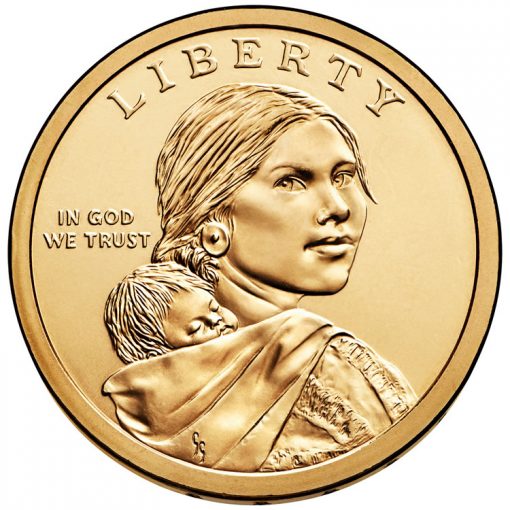
Edges of dollar coins are inscribed with the year of issuance, E PLURIBUS UNUM and the mint mark.
Code Talker Medals
Navajo Code Talkers were awarded Congressional Gold Medals in 2000 for their contributions during World War II. The U.S. Mint continues to offer duplicate bronze versions of those medals to the public.
Last year, 25 Native American tribes received Congressional Gold Medals in "recognition of the dedication and valor of the code talkers and their service" during World War I and World War II. Eight additional Native American tribes also were honored, and will receive medals at a later date. Bronze versions of all these Congressional Gold Medals are available from the Mint as well. For more information, visit this U.S. Mint page about the medals.
History of Native American $1 Coin Program
Native American $1 Coins, authorized by Public Law 110-82, commemorate Native Americans and their contributions to the development and history of the United States.
Reverse themes since the series kicked off in 2009 include:
-
2009 – Three Sisters of Agriculture, depicting a Native American woman planting seeds of corn, beans and squash
-
2010 – Great Tree of Peace and the Iroquois Confederacy, depicting an image of a Hiawatha Belt with five arrows bound together
-
2011 – Great Wampanoag Nation, showing the hands of the Supreme Sachem Ousamequin Massasoit and Governor John Carver
-
2012 – Trade Routes in the 17th Century, depicting a Native American and horse shown in the foreground with running horses in the background
-
2013 – The Delaware Treaty, showing a turkey, a howling wolf and turtle, which are symbols of the clans of the Delaware Tribe. There is also a ring of 13 stars to represent the Colonies.
-
2014 – The native hospitality ensuring the success of the Lewis and Clark Expedition, depicting a Native American man offering a pipe while his wife offers provisions of fish, corn, roots and gourds
-
2015 – Honoring the Mohawk Iron Workers
-
2016 – Honoring Native American Code Talkers
Public Law 110-82 does not mandate specific reverse designs aside from sticking to a requirement that they must be emblematic of an important Native American or Native American contribution each year. The law does suggest design topics, such as honoring the code talkers.
Stay tuned to CoinNews.net for the latest news on the series.






10, 17 or 18 All others are too busy or too ‘cheesey’.
I like #9, seems appropriate with Sagacawea
As a Native American I like design 11, 17 and 18. I’m Sioux and Penobscot.
4, 5, 7 & 9 says it all!
10 and 18
Not many people are aware that the first Code Talkers of WWI were citizens of the Choctaw Nation of Oklahoma.
I think the best of this lot are 2016-NA-R-06 and 2016-NA-R-09.
6, 7 & 18
my grandfather was a Hopi/Tewa code talker in WWII. Was such agreat honor to be at the Capitol when they finally recognized the other 25 tribes. Glad to see it’s not just focused on one tribe. Because I know Navajos weren’t the first code talkers. All the tribes should have been recognized at the same time. Or at least the WWI code talkers should have been recognized long time ago.
Pleased it was finally made known the contributions Native Americans have done to keep this (their) country free. I lke #9, 13, 16.
I have about 15 I think of the Shoshone lady and her child and I believe they are in bronze. I have asked a few coin collectors to tell me what they thought about them and they said they knew nothing about them and so they was worth nothing to them , my grandparent’s had them in a safe when they passed away in 1989 , I will have to look at them again because I think some have other things on them ,